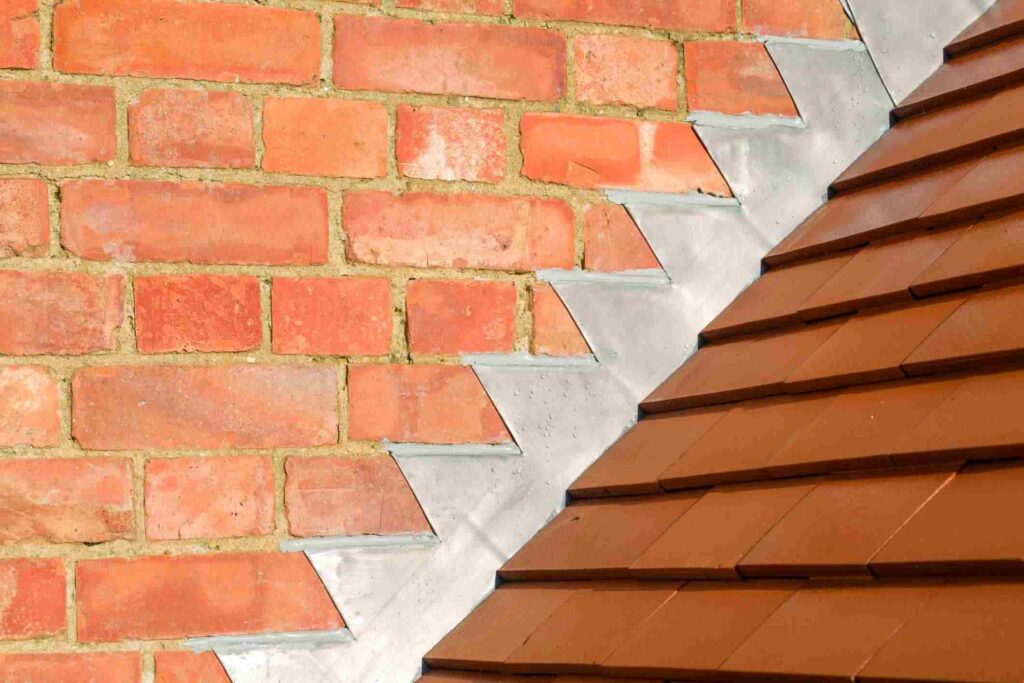Detailed Guide on Roof Flashing

Hester’s Roofing & Coating installs roof flashing on homes in St. Augustine, St. Johns, Marsh Creek, Ponte Vedra, and the surrounding areas. This thin material plays a huge role in keeping water out of your home during stormy weather. Think of roof flashing as your roof’s secret weapon against leaks. We install it in all the spots where water loves to sneak in. Without roof flashing, even the best roofs can fail during a rainstorm. This roof flashing guide will explain what roof flashing is and why your Florida home needs it.
What Is Roof Flashing?
Roof flashing comprises thin sheets of metal that seal gaps in your roof. We install it around chimneys, vents, skylights, and other areas where your roof meets walls and other structures. Water always finds the easiest way down to ground level. Rainwater typically flows toward the gutters. But at joints and seams, water may get stuck or find small openings. This is where roof flashing can help. Flashing directs water away from weak spots. It creates a waterproof barrier that safely guides water off your roof to prevent damage.
Roof Flashing Materials
Most roof flashing is made from metal. The best material for your home will depend on your budget and roof type.
- Aluminum – This is the most popular choice. It’s lightweight, won’t rust, and costs less than other metals.
- Galvanized Steel – This option is stronger than aluminum but also heavier. It handles extreme weather well but may rust if the coating wears off.
- Copper – Copper lasts the longest and looks great on high-end homes. It costs more upfront but can last 50 years or more with proper care.
Types of Roof Flashing
Different areas of your roof need different types of flashing. The main types we install include:
- Continuous Flashing – This long, single piece of flashing runs along walls or dormers. It handles large areas where your roof meets a vertical surface.
- Base Flashing – Base flashing sits at the bottom of walls or chimneys. It catches water flowing down the wall and directs it onto the roof surface.
- Counter Flashing – Counter flashing goes into the wall above base flashing. Together, they create a double layer of protection.
- Step Flashing – Step flashing looks like small steps going up a wall or chimney. Each piece overlaps the next, following the roof line. It works great on sloped areas.
- Kickout Flashing – Kickout flashing sits at the end of step flashing. It kicks water away from the wall and into the gutter system.
- Skylight Flashing – Skylights need special flashing all around their frames. This flashing must handle water from above and direct it around the skylight opening.
- Valley Flashing – Valleys are where two roof sections meet. Water flows fast through these areas, so valley flashing must be extra strong and wide.
- Drip Edges – Drip edges aren’t always called flashing, but they do the same job. They go along roof edges to guide water into gutters and away from fascia boards.
Who Needs Roof Flashing?
Your roof needs flashing if it has a chimney, vent pipe, skylight, dormer, valley, wall intersection, or roof edge. In other words, every roof needs flashing somewhere. Complex roofs with multiple features may need several types of flashing.
Old flashing wears out over time. Metal can corrode, seals can crack, and Florida storms can damage it. As a result, you should replace your flashing every 15 to 20 years. If you’re unsure, rely on Hester’s Roofing & Coating to perform an inspection. We’ll determine whether you should install new roof flashing.
Our Roof Flashing Installation Process
Our roofing experts follow a careful process to install roof flashing correctly. First, we’ll inspect your roof to find all areas that need flashing. This includes checking existing flashing for damage or wear. Next, we remove old flashing. During this step, we also clean all surfaces and repair any underlying damage.
We’ll then measure and cut new flashing pieces to fit perfectly. Each piece must overlap with adjacent pieces and roofing materials. We install the flashing using proper fasteners and sealants. It must be watertight but still allow for thermal expansion.
Finally, we test our work by running water over the flashing areas. We ensure water flows correctly and doesn’t pool anywhere.
Benefits of Roof Flashing
Good roof flashing installation protects your home in many ways:
- Water Damage Prevention – Flashing keeps water out of your home’s structures. This prevents rot, mold, and expensive repairs.
- Increased Home Value – Good flashing keeps your home in great condition and maintains or boosts its value.
- Cost Savings – Flashing costs much less than fixing water damage issues.
- Peace of Mind – You can relax during storms knowing your property is properly sealed.
Why You Can Trust Hester’s Roofing & Coating
Hester’s Roofing & Coating has been installing roof flashing for years. Our team knows how to handle every type of roof and flashing situation. We use only high-quality materials and install them using industry-leading practices. This combination is why we can offer such strong warranties.
Our customers trust us to do the job right the first time. We’re licensed, insured, and experienced, so you know you’re in good hands with us.
Contact Us for Roof Flashing in St. Augustine, FL
Roof flashing may sometimes be an afterthought, but its role is crucial to your home’s safety. Regular flashing maintenance and timely installation will protect your property. Contact us today to schedule a roof flashing consultation.
